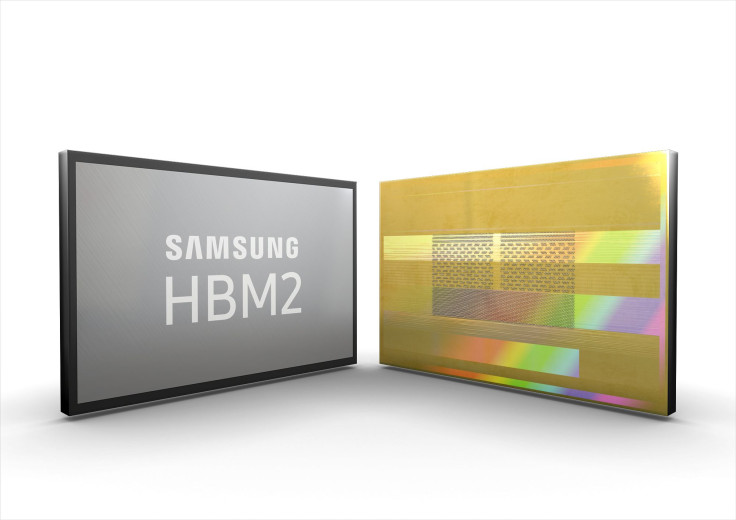Samsung is revving up production of its 8 GB HBM2 to meet growing industry demand

Samsung announced on Wednesday that it is revving up the production of its 8 GB HBM2 (High Bandwidth Memory 2). The company intends to meet the demand of the fast growing market.
The South Korean giant’s DRAM is essential to various applications in the industry. Samsung’s chip isn’t just needed to enhance graphics, back enterprise servers and improve network systems, it’s also used in AI development and high performance computing.
According to Samsung, over 850 of the HBM2 and TSV (through silicon via) technologies packed into its DRAM have either already been patented or have been formally registered for patents. The DRAM solution includes eight 8 GB HBM2 dies and one buffer die at the bottom of the stack. They are all interconnected straight up by TSVs and microbumps.
Just one of the tech titan’s 8 GB HBM2 set packs more than 40,000 TSVs as every die has over 5,000 TSVs. This, in turn, enhances performance as data paths are permitted to be switched to various TSVs in case there’s a delay in data transmission. What’s more, Samsung’s DRAM is optimised to foil overheating past certain temperatures, which makes it a highly reliable solution.
“By increasing production of the industry’s only 8 GB HBM2 solution now available, we are aiming to ensure that global IT system manufacturers have sufficient supply for timely development of new and upgraded systems,” according to the Samsung Memory Sales & Marketing team’s executive vice president Jaesoo Han. “We will continue to deliver more advanced HBM2 line-ups, while closely cooperating with our global IT customers.”
Samsung’s chip boasts of a 256 GBps data transmission bandwidth, which is eight times more compared to 32 GBps GDDR5 DRAM. Doubling a 4 GB HBM2’s capacity also allows it to be more energy efficient and the optimal choice for sophisticated and resource-heavy applications, including those that handle graphics rendering, machine learning and parallel computing.
The Samsung 8 GB HBM2 was first unveiled in June of last year. Now that the company is set to meet the growing industry demand, volume production of the DRAM solution is expected to comprise more than half of its HBM2 manufacturing by the first half of 2018. Samsung is Nvidia’s main source of HBM2, which is used on the GPU and SoC specialist’s premium Volta microarchitecture, so it’s likely that Nvidia will launch an all-new HBM2-based GeForce graphics card together with a GDDR6-based chip next year.
MORE TECH NEWS:
Nokia 105 & Nokia 130 (2017 models): Specs, price and launch details




















